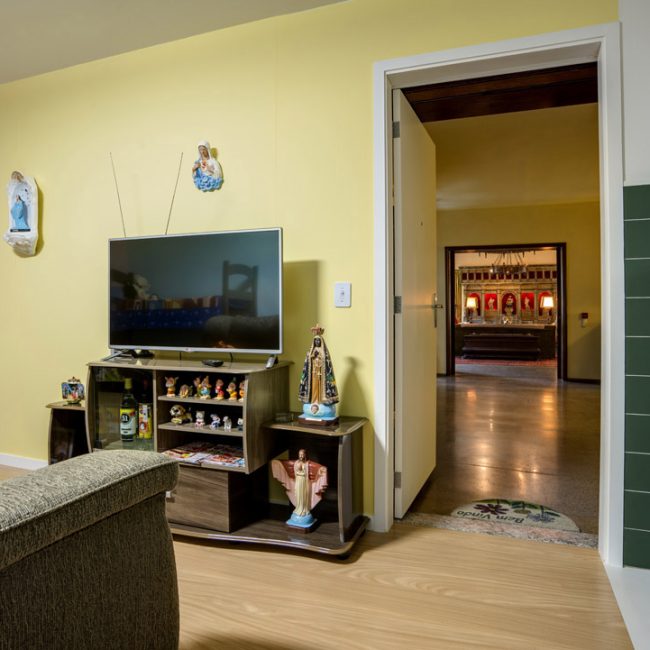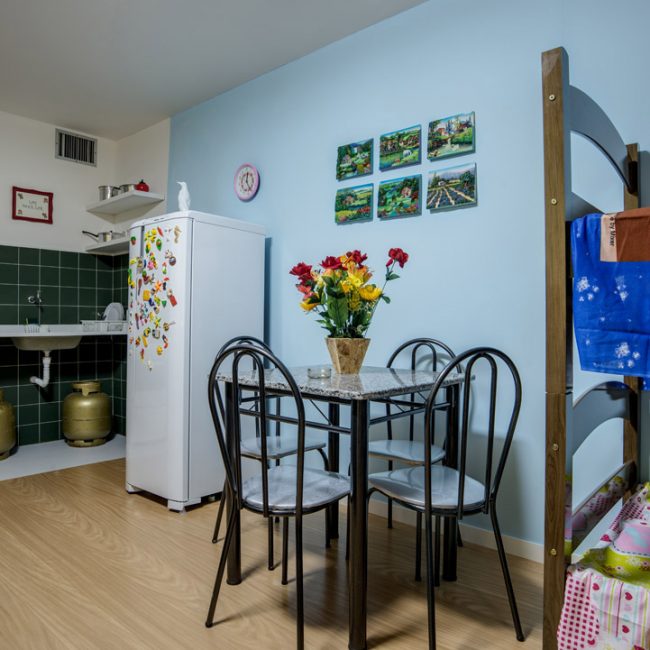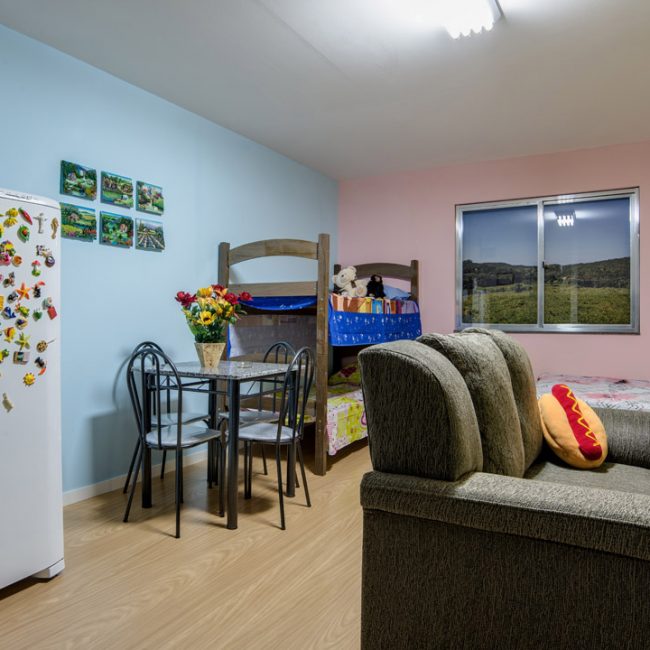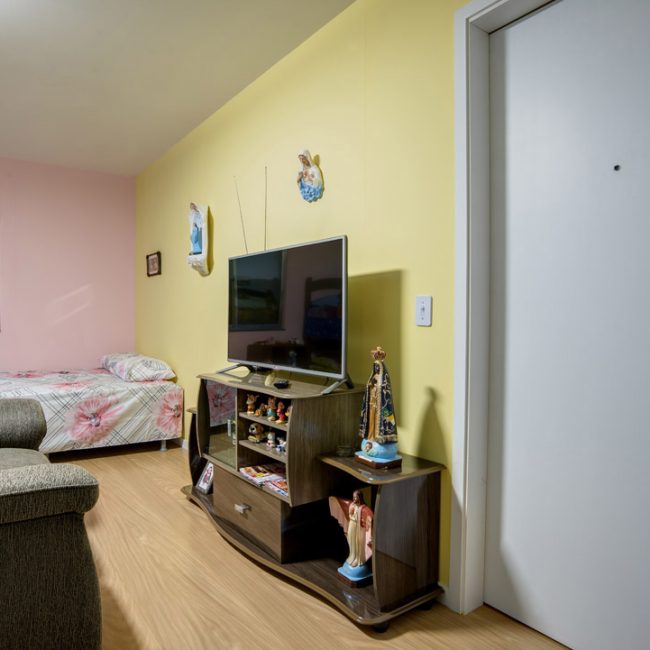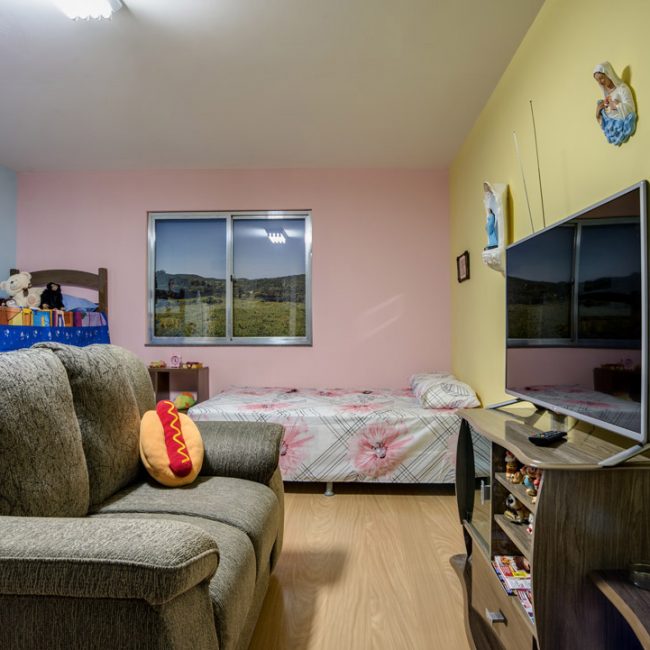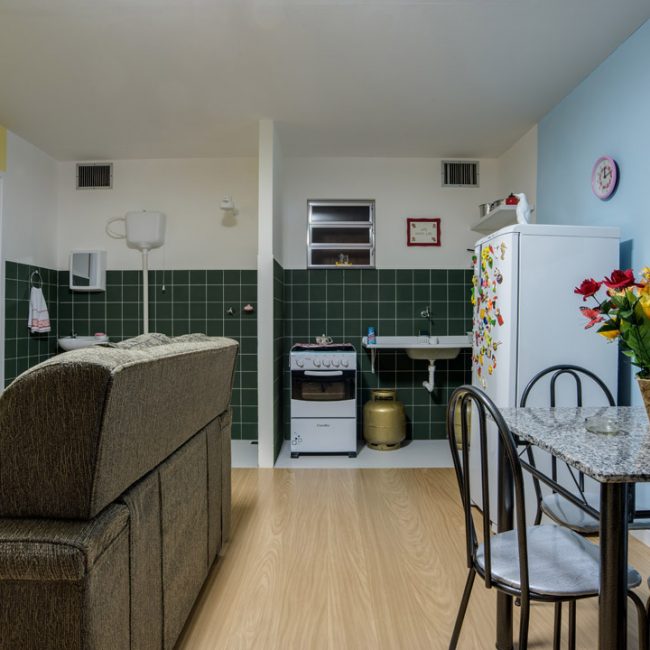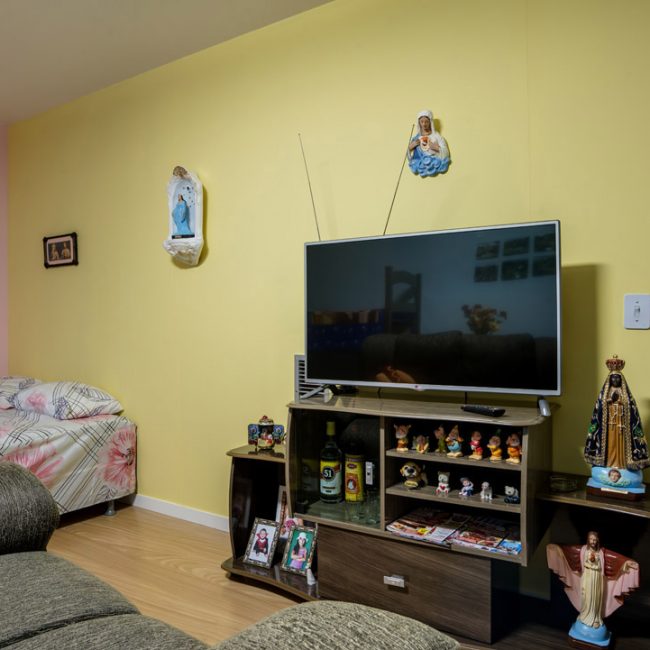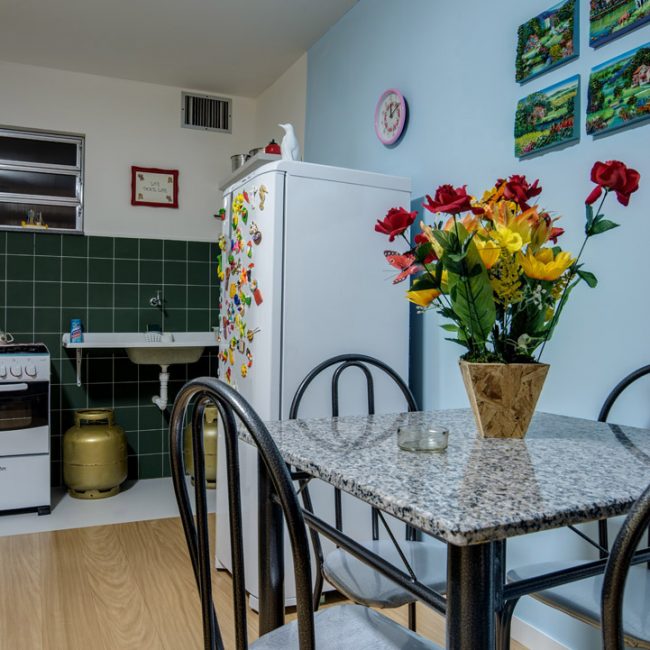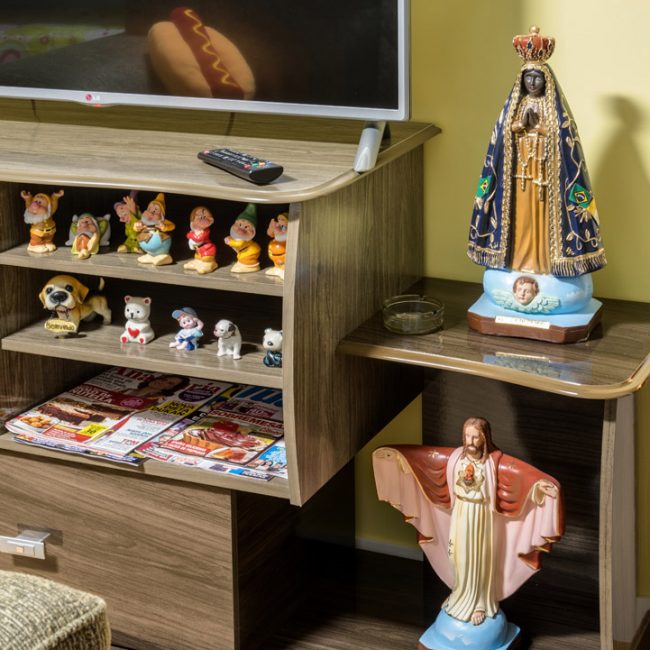Nelson
Leirner
OUR HOUSE, MY LIFE
19th edition | september 13, 2014 – january 25 2015
The story of the origins of Russian matryoshka dolls, the ones that fit inside one another, dates back to the late nineteenth century, and I shall tell it because it helped me realize what lay at the heart of Nelson Leirner’s intervention for the Breathing Project. Tradition has it that they were invented by a woodturner who used to make dolls from pieces of wood. One day, he made one so lovely that he did not want to be separated from her, so he took her home and kept her by his side on his nightstand. Before going to bed he would always ask her if she was happy, and she would reply that she was. One day, when he asked her this question, she said she was not, and that she would need a daughter for her to be happy. So the craftsman decided to respect her wishes. He sawed her in half, hollowed the pieces out, fashioned another doll from the wood he had removed, then placed it inside the first doll. Every night, he would ask the two dolls if they were happy, and one day the smaller one said she was not, and that the only thing that would make her happy was a daughter. And so it went on. The man produced successively smaller dolls, each of which fitted inside the other, until he reached the sixth, which again gave him the same reply. At that point, the woodturner thought of a way to put a stop to it all: on the seventh doll he painted a moustache.
As I was overseeing the clearing out of the English Room at Fundação Eva Klabin, which Nelson Leirner had decided to turn into a model apartment from the government’s “my house, my life” project, which provides housing for low-income families, and as the room gradually mutated from a space of opulence to a fully furnished one-bedroom apartment for a family of four, with a living room, bathroom and kitchen, it gradually dawned on me – above and beyond the obvious political statement – that Eva Klabin’s residence was spawning another dwelling place inside itself.
When Nelson Leirner initially mentioned his idea of doing an intervention in the form of a budget apartment, my first reaction was mirth. I thought it was funny and tongue-in-cheek. After all, these are the two salient features of his output, and, as Agnaldo Farias rightly points out in his fine essay, “Round the world of Nelson Leirner,” he owes this to a Brazilian tradition of wit and irony dating back to Flávio de Carvalho and Oswald de Andrade.
Wit and irony in their broadest senses of challenging present situations by diffusing them either by the effect of surprise triggered by humor or by ironic criticism, upon questioning the prevailing norms in politics, art, and social and economic contracts. This was the strategy Leirner adopted when he decided to create a new home inside the Eva Klabin house museum, except that this one would be a budget home. His idea of bringing class relations into relief is immediately evident from the contrast it produces, as is his questioning of the boundaries of the Breathing Project, and by extension the art system itself.
In his work, Leirner uses a witty, forthright, scathing tone to question the prevailing standards, drawing on practices that diffuse situations and surprise us – just like the Russian woodturner – because its tolerance has the limit of reversion. The moustache painted on the smallest doll put an end to a successive repetition of facts and introduced a new genealogy, demonstrating the potential for a different kind of content capable of arresting a process, but also reinstated the same action of making a doll, except that it was different – it had a moustache. Likewise, Leirner had no interest in interacting with the collection, Eva Klabin’s life story, or any other element remotely related to any of the other Breathing Project experiences. Yet as he sought to diverge from the proposal, he actually reinstated Eva Klabin’s founding act of leaving this institution to the city of Rio de Janeiro: because it is a house. In his desire to distance himself as far as possible from Eva Klabin’s original purpose, he ultimately did the same thing as her – he made a house -, except in a different way. Nietzsche’s doctrine of eternal recurrence, that in the origin of difference lies the impulse for the same.
But what interests us now is to see how something that is the same can be different. The different layers that emerge from his act. Inside Eva Klabin’s house, Nelson Leirner encountered a house (the Russian dolls again) except that this house is different, and what sets it apart (aside from its lack of facial hair) is the fact that it casts into question society’s power relations, from financial power to political power to class differences, and also purports not to be art. As such, his action at Fundação Eva Klabin also has a bearing on the proposal of the collection and the Breathing Project itself. It intends to be invasive and at odds, but it actually reinstates the original meaning of the Breathing Project, which never intended to be for installations, but for interventions. Arguably, no artist has accepted with such gravity the proposal of this project: Nelson Leirner’s work is not an installation, but a radical intervention, eliminating one of its rooms. He has turned the English Room into low-cost housing.
In the short time I spent with Nelson Leirner I learnt to respect him as a mystic. To be clear: in On the Kabbalah and its Symbolism, Gershom Scholem describes a mystic as someone who is capable of changing the course of religions because he understands their internal workings so well that he is accepted, without being questioned or even sacrificed for a disbeliever, as someone who is effecting a natural, organic development in the destiny of a meaning because he reinstates the original meaning of the religion. When a mystic calls for change, he remains faithful to the origins. Nelson Leirner fits this definition. He has profound knowledge of the workings of the art circuit, from its galleries to its museums and cultural institutions, including critics and curators, salons and fairs and biennales, marketing and publicity – basically, all the highways and byways that surround this “sanctified” object conventionally known as art. His career in the practice of art has been marked by a demystification of everything we raise up as art, a questioning of all those different elements, to prove that what he does is not art. Yet he is still hailed as one of Brazil’s greatest artists, to the point that, as he himself says, if he wanted to start selling hotdogs on the street corner they would think he was doing a happening.
The gamble Leirner wants to take with us is that he allows himself to criticize and contest the art circuit because he does not cast art in a moral light, he knows it in his gut. Proof of this is his stand of a model apartment inside the Eva Klabin house museum. In his eyes, there is no such thing as low or high culture. It is all levelled out by the same creative impulse, which he holds is simply the act of doing, since he also rejects any mystification of the creative process. This attitude of his is like the behavior of the mystics, whose act is to refute the profound and original meaning of religions. Where does the word “art” come from? Most would say the Latin word ars, meaning skill or technique, mostly for cultural reasons as the Greco-Roman tradition is so strong in the West. However, many today forget that it originally comes from Assyrian, and means to do, the doing of tasks, which is not so very far from the Latin meaning. So once again Leirner builds where he would demolish, by reinstating the original meaning of the word “art,” to do. Leirner does. And what he does is considered art. For him, doing is what defines his action. For him, art is doing, and nothing more. It is a job like any other. But the conflict it triggers is that however much he denies the art system, the art market does not deny him as an artist. It is a battle that is lost before it is fought, like medicine, revealed powerless in the face of death. But it is thanks to the tension of this conflict that he has built his life and his work.
There could be no more appropriate artist to celebrate the tenth anniversary of the Breathing Project. With his forthright, direct, critical, playful, lucid, good-humored action, he introduces an issue that can be equated to the proposal of the project itself – to diffuse conventional situations that have become self-perpetuating.
Nelson Leirner is an artist who makes sharp observations of reality and is always ready to speak out against institutions frozen by the inertia of social contracts. For him, what matters is to discuss the issue of value: ethical value, market value, political value. He is not bothered about belonging to any trend. What interests him is to present situations that can speak for themselves, which, like Russian dolls, gradually reveal new inner layers of meaning until we come up against a situation that confounds our expectations.
This is how Leirner has worked for more than 50 years, consistently defying the powers that be, looking for ways to subvert or confound them using the tradition of wit. All hail Nelson Leirner!
Marcio Doctors





